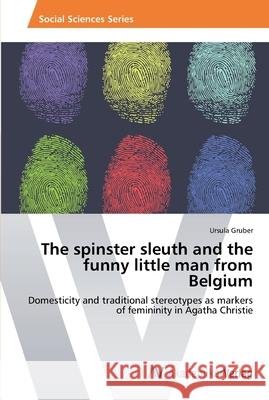The spinster sleuth and the funny little man from Belgium » książka
The spinster sleuth and the funny little man from Belgium
ISBN-13: 9783639491616 / Angielski / Miękka / 2013 / 148 str.
Few associate Agatha Christie's detective novels with domesticity as the author's works are first and foremost known for her suspenseful plots and puzzling mysteries. Nevertheless, this publication aims to analyse Christie's construction of domestic elements in the context of Great Britain's socio-historical circumstances between the two World Wars. The interwar period challenged existing gender roles and stereotypes, assigning female fictional characters as well as feminine detection methods a more valued position in detective novels. Based on this background, this publication addresses three main research areas: detection methods, gendered locations, and the evil from within. Firstly, Miss Marple's and Hercule Poirot's feminine detection methods are analysed. The following chapter examines Christie's settings including her crime scenes in the context of the separation of private and public spheres, which emerged during the Victorian era. Lastly, Sigmund Freud's theory of the uncanny is relevant in analysing Christie's construction of evil.
Few associate Agatha Christies detective novels with domesticity as the authors works are first and foremost known for her suspenseful plots and puzzling mysteries. Nevertheless, this publication aims to analyse Christies construction of domestic elements in the context of Great Britains socio-historical circumstances between the two World Wars. The interwar period challenged existing gender roles and stereotypes, assigning female fictional characters as well as feminine detection methods a more valued position in detective novels. Based on this background, this publication addresses three main research areas: detection methods, gendered locations, and the evil from within. Firstly, Miss Marples and Hercule Poirots feminine detection methods are analysed. The following chapter examines Christies settings including her crime scenes in the context of the separation of private and public spheres, which emerged during the Victorian era. Lastly, Sigmund Freuds theory of the uncanny is relevant in analysing Christies construction of evil.











